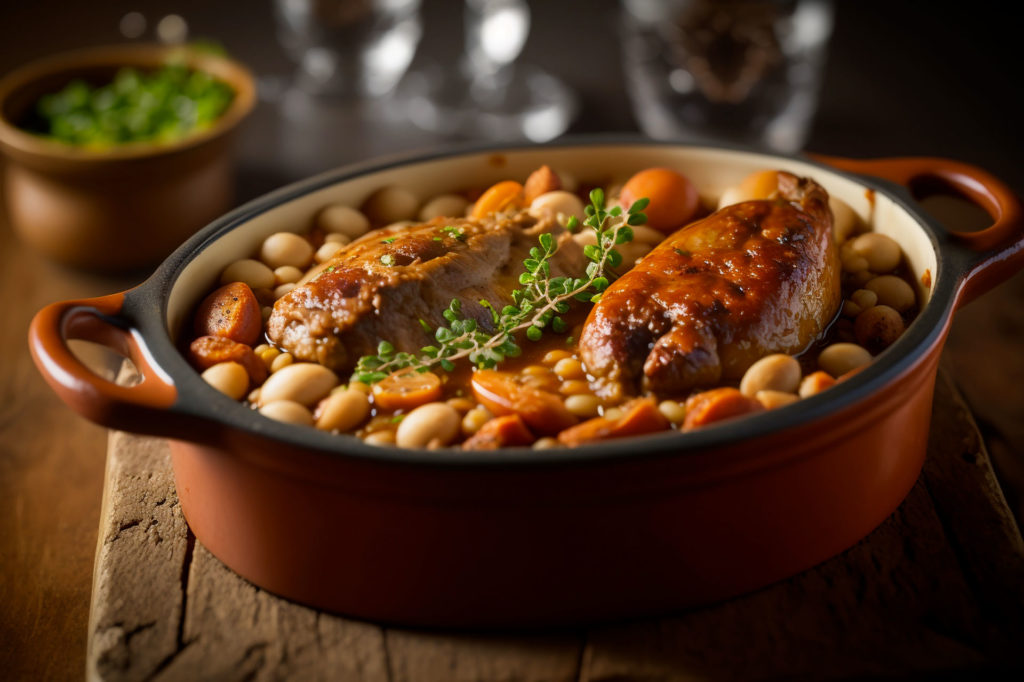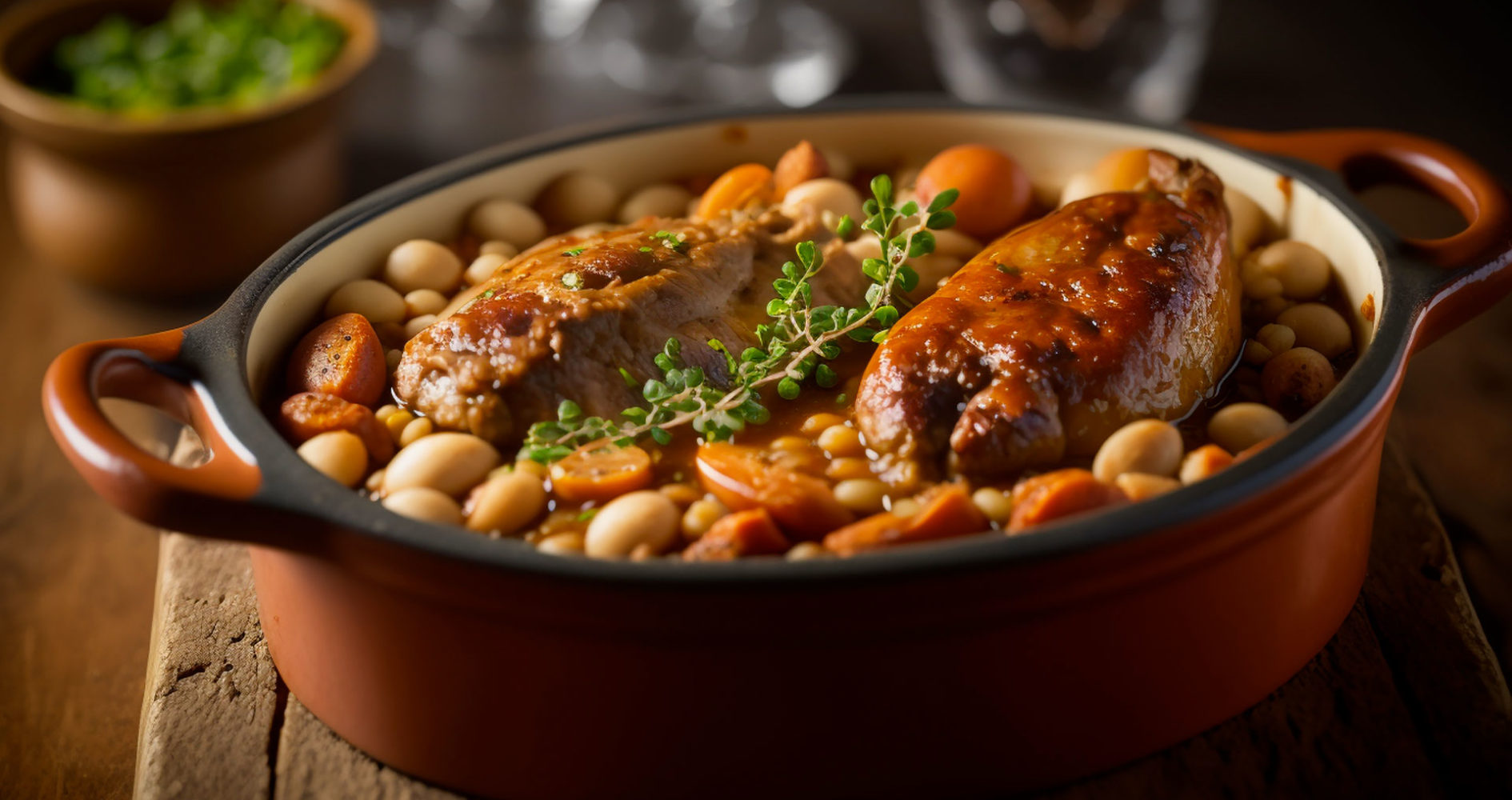If there’s one dish that’s emblematic of winter, rustic and flavorful, it’s cassoulet! This classic of French gastronomy was born in Castelnaudary, Aude, during the Hundred Years’ War. Discover it!

Cassoulet, winter superstar
Try your hand at preparing a homemade cassoulet, Audoise-style! It is made with goose or duck confit in Castelnaudary, with partridge in Carcassonne with lamb or mutton in Toulouse. There are as many recipes as there are cooks! Camping La Pinède gives you its exclusive recipe for homemade cassoulet, the jewel in the crown of Occitan gastronomy.
Ingredients for 4 people
- 400 g Lauragais lingot beans (dried white beans)
- Goose or duck confit (wings, sleeves, legs)
- 200 g fresh sausage
- 200 g pork (shoulder, shank)
- 250 g pork rind
- 70 g salted bacon
- 1 onion
- 1 garlic clove
- 1 carrot
- A bouquet garni (thyme, bay leaf, parsley)
- Salt and pepper
Preparation
- Preparation time: 45 min
- Cooking time: 3 h
Soak the beans in cold water the day before (12 h minimum).
Boil the beans in a pan of boiling water for 5 min.
Bouillon: 3 liters of water + chopped rind + pork bones + onions + carrots + bouquet garni. Season generously with salt and pepper.
After 1 hour’s cooking, separate the rind from the filtered stock, which is kept.
Dip the drained beans in the broth and cook for 1 hour.
Pan-fry the confit and all the pork pieces, brown the sausages and set aside.
Separate the cooked beans from the stock and set aside.
Crush the garlic and salted bacon, then mix with the beans.
Assemble the cassoulet: start with the rind lining the dish, alternate beans and meat, then finish with a layer of beans.
Cover with broth.
Add a spoonful of fat (left in the pan) and season with freshly ground pepper.
Place in the oven at 150 degrees (gas mark 5 or 6) for at least 2 hours.
During baking: press the crust down several times with the back of a spoon. Tradition has it that the crust is cracked seven times!
If necessary, add a little stock to prevent your cassoulet from drying out.
Cassoulet is best prepared the day before, because it tastes even better reheated!
The short history of cassoulet
For many, audois cassoulet is the best cassoulet in the world! Yet originally, this bean stew with pork rind and a small piece of meat was seen as “the poor man’s dish”.
Legend has it that cassoulet originated in Castelnaudary during the Hundred Years’ War. The story goes that the inhabitants, besieged by the English and starving, gathered all available foodstuffs in a large cauldron to make a gigantic stew. As for its name, it owes it to the cassole, a hollow terracotta dish – formerly known as a “cassolo” – which allows ingredients to be cooked slowly.
Castelnaudary, world capital of cassoulet
In Aude, there’s no season for a good cassoulet! You’re spending your vacations near Carcassonne this summer? Take the opportunity to attend the Fête du Cassoulet in Castelnaudary, during the last week of August. Even under the scorching sun, Chaurienne cassoulet is still a hit with tourists. It’s also an opportunity to explore the Cassoulet tourist route a 180 km loop that crosses the Aude, on either side of the Canal du Midi .


